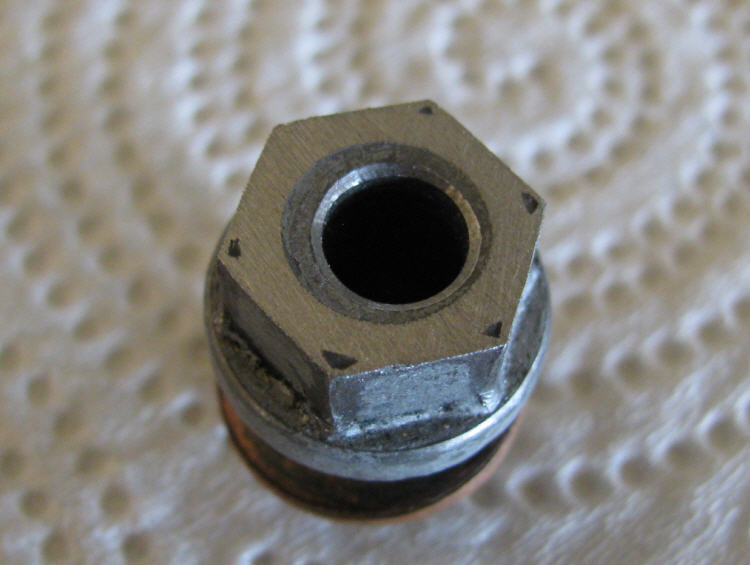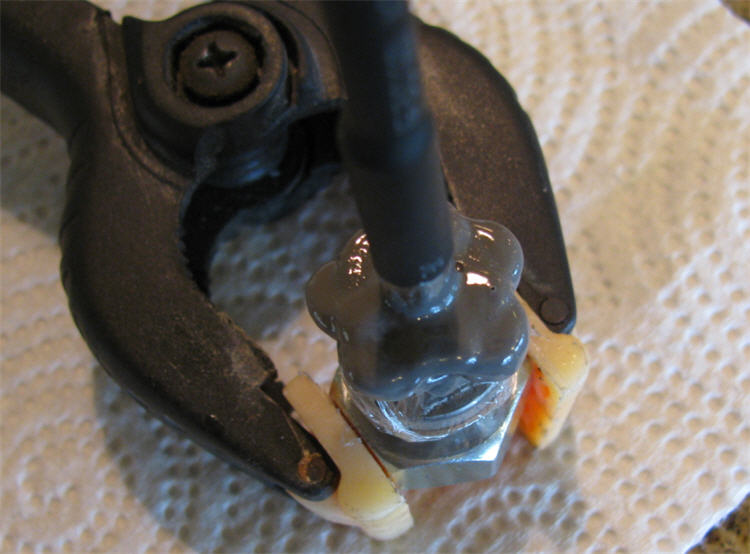In the thread about
Running with oil cooler bypassed it became pretty clear that my original design choice to take the oil temperature through a contact sensor mounted on the oil cooler line to the cooler was flawed. For whatever reason, I never got above 180 degrees or so, and then only on a long pull up a good hill on a warmish day. The discussion was pretty firm in the contention that normal oil temperature should be 200 degrees or slightly more in order to effectively boil off any condensate that might make it into the engine either through atmospheric or combustion vectors. One suggestion put forth was to put a sensor in the oil drain plug and take the temperature directly of sump oil. It was pointed out that the drain plug is oriented parallel to the ground so that would negate any potential interference with road debris or other hazards.
I definitely liked the idea so I set out to build a sensor based on that idea.
Since the sensor was going to be mounted in the drain plug, I needed to find a convenient way to avoid twisting up the connecting cable every time I had the oil changed. The most obvious solution was to use a connector which could be disconnected, but that's a potential source of failure so I sought something a bit more simple and elegant. I decided to use magnets glued to a collar that would slide into the modified drain plug. So I went out and purchased some small round magnets with the intention of drilling a hole in the center to slip over the sensor - WRONG!!! Magnets are exceedingly hard and are not touched with a standard drill. Turns out magnets are made by grinding, usually with diamond tools....who knew. So plan B with the magnet strategy was to get some small 1/4" round Neodymium magnets and mount them radially around the sensor.
The first thing was to modify a drain plug to accept a DS18B20 sensor. The sensor I'm using is packaged in a metal jacket with an integral electrical cable. Here's and image of the packaged sensor.

The first thing was to modify a drain plug to accept a DS18B20 sensor. I drilled out the center of the drain plug and then filed it flat to provide maximum gripping power of the Neodymium magnets I was planning on using, being very careful to not drill all the way through.

The next step was to install the magnets on a convenient washer around the body of the sensor.

I then inserted the sensor into the drain plug which was protected with a bit of Saran Wrap to catch any overflow and prevent gluing the sensor permanently to the plug.

I then mixed up a batch of JB Weld and glued the magnets together and encapsulated the unit in resin.

After a little cleaning of the magnet faces, the sensor is ready to go.

Next time I change the oil (tomorrow or the next day as part of the final preparations for the Benzipalooza trip to the Canadian Rockies) I'll install this drain plug.
All that will be needed after that is to wire it in to the system and modify the software a bit to include that temp reading in the Gauges Project display.